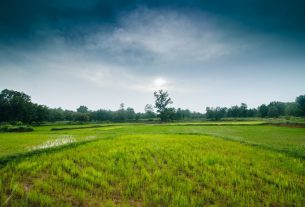Bhubaneswar, March 4: Bhubaneswar, the Capital City of Odisha, has been adjudged the second best city in India in the “below 1 million population” category on the Ease of Living Index-2020 with an overall score of 59.85 points out of 100. The quality of life in Bhubaneswar is better than cities like Gurugram (56.00) and Thiruvananthapuram (53.93).
However, Bhubaneshwar has got the highest Citizen Perception Score (94.80) among the 111 cities participated in the survey.
The Ease of Living Index (EoLI) and the Municipal Performance Index (MPI) 2020 was released by Union Housing and Urban Affairs Minister Hardeep Singh Puri earlier on Thursday in an online event in New Delhi.
Bengaluru emerged as the top performer in the ”population above one million’ category while Shimla topped the category of cities with ”population less than million”.
Speaking on the announcement, Bhubaneswar Municipal Corporation Commissioner Prem Chandra Chaudhary said, “Bhubaneswar has improved its ranking over the last two years and it is the result of the good efforts of the civic administration as well citizen engagement and participation to make the city a best place to live in.”
The Commissioner further added: “In compared to other cities, the quality of life in Bhubaneswar is much better in terms of its air quality, water, road, connectivity, environment etc. It should be our collective responsibility to contribute to make our city the most livable place in the country.”
The Ease of Living Index (EoLI) is an assessment tool that evaluates the quality of life and the impact of various initiatives for urban development. It provides a comprehensive understanding of participating cities across India based on quality of life, economic-ability of a city, and its sustainability and resilience. The assessment also incorporates the residents’ view on the services provided by city administration through a Citizen Perception Survey.
The EoLI 2020 strengthens its scope by consolidating the framework with the addition of a Citizen Perception Survey in the index, holding a weightage of 30%. It, therefore, examines the outcomes that lead to existing living conditions through pillars of Quality of Life, Economic Ability, Sustainability, spanning across 13 categories of -Education, Health, Housing and Shelter, WASH and SWM, Mobility, Safety and Security, Recreation, Level of Economic Development, Economic Opportunities, Environment, Green Spaces, and Buildings, Energy Consumption, and City Resilience, that account for 70% of the overall outcome.
The methodology and approach for the revised edition of EoLI and MPI were released by MoHUA in February 2019. Essentially, the EoLI report aims to measure the well-being of Indian citizens in 111 cities, across the pillars of Quality of Life, Economic-ability, and Sustainability, with 49 indicators under 13 categories.
The EoLI primarily seeks to accelerate India’s urban development outcomes, including the achievement of the Sustainable Development Goals. The findings from the index can help guide evidence-based policymaking. It also promotes healthy competition among cities, encouraging them to learn from their peers and advance their development trajectory.
MUNICIPAL PERFORMANCE INDEX (MPI):
Besides, the Ease of Living Index 2020, the Union Government also released the final rankings of the Municipal Performance Index (MPI).
In the Municipal Performance Index, Bhubaneswar has been raked 25th with an overall score of 43.38 points out of 100.
In the million-plus category, Indore topped the list, followed by Surat and Bhopal.
In ‘less than million category’, New Delhi Municipal Council (NDMC) emerged as the leader, followed by Tirupati and Gandhinagar.
“The MPI examined the sectoral performance of 111 municipalities (with Delhi being assessed separately for NDMC, and the three Municipal Corporations) across five verticals which comprise of 20 sectors and 100 indicators in all totality. The five verticals under MPI are Services, Finance, Policy, Technology and Governance,” the MoHUA stated.


